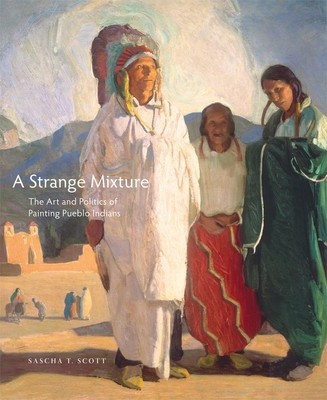
- We will send in 10–14 business days.
- Author: Sascha T Scott
- Publisher: University of Oklahoma Press
- ISBN-10: 080614484X
- ISBN-13: 9780806144849
- Format: 23.6 x 28.5 x 3.3 cm, hardcover
- Language: English
- SAVE -10% with code: EXTRA
Reviews
Description
Attracted to the rich ceremonial life and unique architecture of the New Mexico pueblos, many early-twentieth-century artists depicted Pueblo peoples, places, and culture in paintings. These artists' encounters with Pueblo Indians fostered their awareness of Native political struggles and led them to join with Pueblo communities to champion Indian rights. In this book, art historian Sascha T. Scott examines the ways in which non-Pueblo and Pueblo artists advocated for American Indian cultures by confronting some of the cultural, legal, and political issues of the day. Scott closely examines the work of five diverse artists, exploring how their art was shaped by and helped to shape Indian politics. She places the art within the context of the interwar period, 1915-30, a time when federal Indian policy shifted away from forced assimilation and toward preservation of Native cultures. Through careful analysis of paintings by Ernest L. Blumenschein, John Sloan, Marsden Hartley, and Awa Tsireh (Alfonso Roybal), Scott shows how their depictions of thriving Pueblo life and rituals promoted cultural preservation and challenged the pervasive romanticizing theme of the "vanishing Indian." Georgia O'Keeffe's images of Pueblo dances, which connect abstraction with lived experience, testify to the legacy of these political and aesthetic transformations. Scott makes use of anthropology, history, and indigenous studies in her art historical narrative. She is one of the first scholars to address varied responses to issues of cultural preservation by aesthetically and culturally diverse artists, including Pueblo painters. Beautifully designed, this book features nearly sixty artworks reproduced in full color.
EXTRA 10 % discount with code: EXTRA
The promotion ends in 15d.17:54:51
The discount code is valid when purchasing from 10 €. Discounts do not stack.
- Author: Sascha T Scott
- Publisher: University of Oklahoma Press
- ISBN-10: 080614484X
- ISBN-13: 9780806144849
- Format: 23.6 x 28.5 x 3.3 cm, hardcover
- Language: English English
Attracted to the rich ceremonial life and unique architecture of the New Mexico pueblos, many early-twentieth-century artists depicted Pueblo peoples, places, and culture in paintings. These artists' encounters with Pueblo Indians fostered their awareness of Native political struggles and led them to join with Pueblo communities to champion Indian rights. In this book, art historian Sascha T. Scott examines the ways in which non-Pueblo and Pueblo artists advocated for American Indian cultures by confronting some of the cultural, legal, and political issues of the day. Scott closely examines the work of five diverse artists, exploring how their art was shaped by and helped to shape Indian politics. She places the art within the context of the interwar period, 1915-30, a time when federal Indian policy shifted away from forced assimilation and toward preservation of Native cultures. Through careful analysis of paintings by Ernest L. Blumenschein, John Sloan, Marsden Hartley, and Awa Tsireh (Alfonso Roybal), Scott shows how their depictions of thriving Pueblo life and rituals promoted cultural preservation and challenged the pervasive romanticizing theme of the "vanishing Indian." Georgia O'Keeffe's images of Pueblo dances, which connect abstraction with lived experience, testify to the legacy of these political and aesthetic transformations. Scott makes use of anthropology, history, and indigenous studies in her art historical narrative. She is one of the first scholars to address varied responses to issues of cultural preservation by aesthetically and culturally diverse artists, including Pueblo painters. Beautifully designed, this book features nearly sixty artworks reproduced in full color.


Reviews